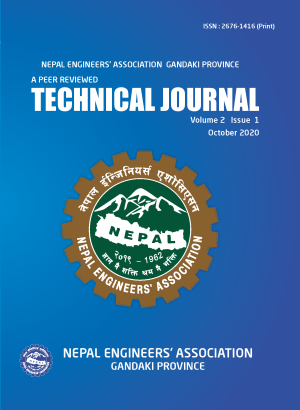Comparison of Interstorey Drift in General RC Buildings in Pounding and No Pounding Case
DOI:
https://doi.org/10.3126/tj.v2i1.32828Keywords:
Inter-storey drift, Pounding, Fast Non-linear Analysis (FNA), RC Building, SAP 2000Abstract
Inter-storey drift is an important parameter of structural behavior in seismic analysis of buildings. Pounding effect in building simply means collision between adjacent buildings due to earthquake load caused by out of phase vibration of adjacent buildings. There is variation in inter-storey drift of adjacent buildings during pounding case and no pounding case.
The main objective of this research was to compare the inter-storey drift of general adjacent RC buildings in pounding and no pounding case. For this study two adjacent RC buildings having same number of stories have been considered. For pounding case analysis there is no gap in between adjacent buildings and for no pounding case analysis there is sufficient distance between adjacent buildings.
The model consists of adjacent buildings having 4 and 4 stories but unequal storey height. Both the buildings have same material & sectional properties. Fast non-linear time history analysis was performed by using El-centro earthquake data as ground motion. Adjacent buildings having different overall height were modelled in SAP 2000 v 15 using gap element for pounding case. Finally, analysis was done and inter-storey drift was compared. It was found that in higher building inter-storey drift is greater in no pounding case than in pounding case but in adjacent lower height building the result was reversed. Additionally, it was found that in general residential RC buildings maximum inter-storey drift occurs in 2nd floor.
Downloads
Downloads
Published
How to Cite
Issue
Section
License
© Technical Journal
Authors are required to transfer their copyright to the journal.




